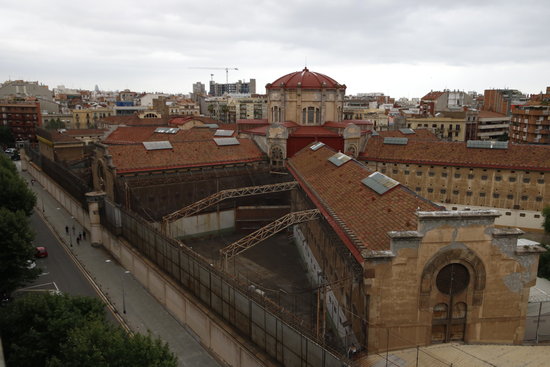Past reflections and future visions: the repurposing of an infamous prison
One year on since opening to the public, big plans are in pipeline for La Model in the centre of Barcelona, once a symbol of Francoist repression

One hundred and twelve years and 364 days. This is the time that Barcelona’s La Model prison remained open before its last inmates left exactly one year ago. Throughout this time, the penitentiary became the most iconic prison in Catalonia—and it still stands as a reminder of the country’s troubled history.
But how do we deal with our past when it’s painful? For Catalonia, and Spain as a whole, this question lies at the very heart of the struggle to cope with the Civil War and subsequent 40 year-long dictatorship. Is it better to remember, or forget?
La Model was founded on the premise of criminal justice: the state was charged with protecting society from crime, and it was up to the state to decide who was deemed as a criminal. Throughout history, the ever-changing profile of the inmates was a reflection of what each regime deemed as criminals: gypsies, drug dealers, LGTB people, thieves, poor people. The majority of them, anonymous citizens. Yet La Model is deeply tied to its most renowned inmates: political prisoners.
Political prisoners
The list includes important figures in Catalan history, such as union leader Salvador Seguí, the educator Francesc Ferrer i Guàrdia, and also Lluís Companys, the Catalan president executed by dictator Francisco Franco in 1940. The last inmate executed was a 25-year-old anarchist called Salvador Puig Antich. Convicted for the death of a policeman in a shootout, his execution proved extremely controversial and turned him into a political symbol of antifascism in the late years of the dictatorship.
Four decades of political persecution under the dictator’s rule turned la Model into a perennial symbol of Francoist repression. For years, politicians pledged to close the penitentiary. In the meantime, prisoners came and went, and La Model would occasionally be in the news as inmates tried to escape, or protested for the poor conditions inside. Last year, the prison was finally closed. The fourteen inmates left were transferred to another prison elsewhere. Police officers finished the last guard. Signatures made the penitentiary’s closure official. And the closing of its doors put an end to its century-long history.
Looking to the future
The future of La Model prison, a colossal symbol of Francoism in the heart of Barcelona, does not escape this debate, as the city’s council looks for a way to preserve the past but look to the future, open to everyone.
“When we say open to everyone,” Ada Colau said on the day of the prisons’ inauguration to the public, “we want that it is no longer a space of shadows, a space of fear, of reclusion. We want it to be a space for dialogue, a Meeting palce, a space for freedom.”
Now, from Monday to Saturday, between 10am and 7pm, the main entrance will be open to anybody who wishes to enter the former prison and stroll around its inner courtyard.
Challenges ahead
But the city council faces the challenge of turning the prison into a welcoming space and a symbol of freedom. While a final project is being approved, the building has been opened to the public. And people responded en masse: concerts in support of hip hop artists sentenced to prison, conferences on the attacks to freedom of speech, art exhibits, festivals, and even music videos. With every new activity, citizens are slowly owning these walls and transforming their very meaning.
La Model will preserve its central building and at least one of its naves as a memorial. But it will also include a park, a sports court, social housing, a youth center and a high school. A dramatic change: and for the neighbors it’s not only good news that comes with it.
The future of La Model and the neighborhood is filled with challenges—just like the endeavor to honor the prison’s past. Barcelona will have to deal with all of them. But there are some signs that future and past can coexist. For instance, this kindergarten located next to the former penitentiary—where children play beside the walls where thousands of men were deprived of their liberty for more than a century.